|
My brain works in references, whether it's everyday conversations, watching television, or even when writing. Everything winds up connected one way or another, like a web of tangled string, and when it comes to writing it is not always intentional, either. Here are some intentional and unintentional references in my novel, An Impossible Dream.
0 Comments
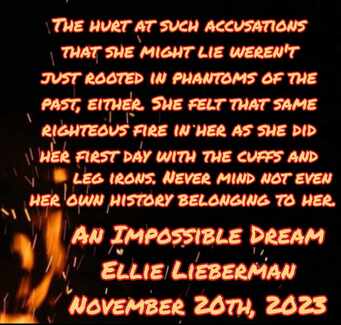 It’s one thing to be called a liar, it’s another thing to be called a liar about your lived experience. Sare from my novel, An Impossible Dream, knows this all too well. She notes the “righteous fire” that comes from the injustice of it. For her, the experience she lived is one multiple characters continually seem to struggle to wrap their brain around because it is not a story many would have heard before. It is shocking to them, uncomfortable, and maybe even challenges their views of the world as they think they know it. Her frustration goes a step further, in someone digging into her past without permission. That, on top of not being believed, she does not even have a say on who she chooses to share said experience with. As is stated in the novel, “Never mind not even her own history belonging to her.” 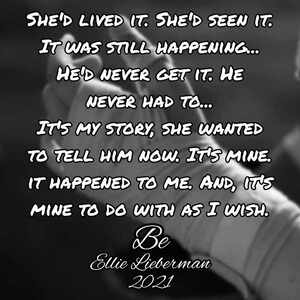 This idea of the preciousness of our personal stories is an ongoing theme in this series, as well as the violation of that sacredness from others. In book 1 of the same series, Be, Ari deals with this, too. In her case, along with the dismissing or discounting, she also deals with her eldest brother, Nick, using her lived experience to his advantage, making it about him, and trying to dictate how he feels she should respond to it. In that moment, she reflects: “It’s my story, she wanted to tell him now. It’s mine. It happened to me. And it’s mine to do with as I wish.” 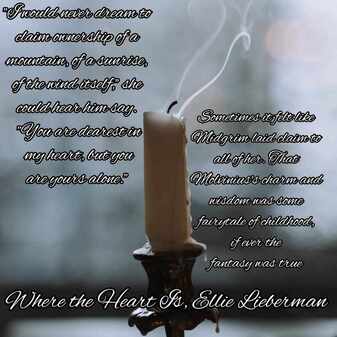 This becomes a central theme in book three, Where the Heart Is, with the Queen and the realization of the erasure of her overall story over the course of the first three books, and the eventual reclaiming of her narrative in book four.
It felt like a sort of rebellion against the patriarchy. That she was going to speak regardless of his response or his purposely deaf ears. It felt inevitable that speaking to “her father” would mean never being heard the way “her father” assumes he would and, even, should be heard. As Dr. Karen Ward says in the preface of the Girl God Anthology, Re-Membering with Goddess, “Speaking about trauma is political.” It is as “liberating” and “revolutionary” as she says “understanding trauma is” and “healing trauma is.” When it comes to CPTSD, one of the common struggles people face is the re-traumatization that occurs when they try to share their stories. The dismissing, the discounting, and even the excuses people make for why the abuse or trauma occurred. I know this from firsthand experience and have seen others sharing across social media of similar experiences. It’s not just mental health, either. What immediately comes to mind is my mother’s experience as someone who lives with chronic illness. One of her many, many experiences that she shares in her book, The Unchained Spirit, involved an intrathecal pump that was meant to aid the “intense, unrelenting pain over [her] entire body” that caused further problems and torture. She came close to losing her feet and “finally, the pump was removed at [her] insistence.” She was back to dealing with the horrific pain, but as she notes about advocacy and pushing to be heard, “What was important was that I spoke up and followed my instincts. I knew what was causing the problem and, despite all those who said otherwise, I insisted the pump be removed and the meds stopped. And, I was right.” It’s worth noting, my mother and I are straight, cis, and white. We’re conscious of all we do not have to face because of the privilege that comes with that. We are conscious of the devastating consequences that come with not being heard, not being believed, with someone else trying to take over the story or erase it, with not being allowed to decide who gets to hear our stories or when. We’re also conscious that we are not the authority on someone else’s lived experience and that no one owes us their story. That someone else’s experience is not about us.
When someone tells us their story, we shut up, we listen, and we believe them. 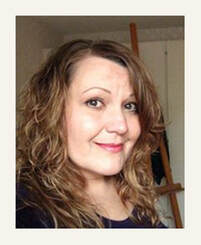 Maria Yrsa Rönneus – authour, artist, graphic designer. As a child, she wanted to grow up to be three things: a ballerina, a farmer, and a writer. Born and raised in rural Sweden, rambles through fields and forests shaped her and continue to influence all her work; animals and plants are ever present. Whether images or words, she immerses herself wholly in her work. The majority of her stories are written in English and, most commonly, in the genres of historical fiction, contemporary romance, or short stories inspired by Scandinavian mythology and folklore. She and her husband live in the southern tip of the Scandinavian peninsula. Your Regency Tales remind me of works by Jane Austen and Oscar Wilde in terms of setting, characters, humor, and social commentary. Where have you drawn inspiration from for the series in general and specifically Offers of Atonement? Thank you. It’s a great compliment to be compared to Austen and Wilde, and both are indeed role-models to me. At the same time, I’m writing for 21st century people, and I try for my own and original style. Inspiration comes from everywhere, from everything I’ve ever experienced or read, from everyone I’ve ever met. Having dated a fair few “bad boys” in the past, I know that it’s generally more of an ordeal than an adventure. The first idea for Offers of Atonement was born as an attempt to write the trope of “bad boy transformed to great boyfriend” in a way that felt credible. Offers of Atonement is book 5 in your Regency Tales Series. Each book can be read as stand-alones. How does Offers of Atonement differ from the other books in the series? All the novels are character-driven, and the stories are told from the characters’ POV. It sort of follows organically that the story-telling hinge on their personality and outlook on life. Captain Hartcourt is a cynical fish in murky waters and so, this story is a shade darker than the others. That said, it’s been some years since I wrote the first one and I have also evolved as a writer in that time. Your descriptions often bring the past to life, through all the senses. How do you capture a past setting so well and ensure its accuracy, even in such everyday details? Imagination and research, lots and lots of research. I spent four years researching and writing Offers of Atonement. Of course, some things are impossible to know exactly – the odours of a 19th century sugar refinery for example. Though there still are sugar refineries, they’re nothing like what they were back then so, even if you’d been to one, it wouldn’t have been the same. Here’s where an aptitude for kitchen disasters helps, I’ve failed with enough batches of Christmas toffee to know what burnt sugar smells like. Not everything is that different from our own time; I was raised in the country, in a 19th century farmhouse that gave me first-hand experience of wood stoves, outhouses, and so on. Your main characters, Lady May and James Hartcourt, both have quirks that really add to their characters, whether it’s May’s superstitious stories or Hartcourt’s reliance on the deck of cards he carries. These parts of their characters suit them well and make them seem even more real. Do you actively work to create your characters or do they come to you fully formed? It varies; some characters show up more or less complete, others take more work to flesh out. Hartcourt has been a minor character in some of the previous books, so his personality had developed in my mind over several years. May was harder to get a grip of. When the book begins, she has very limited experience of the world; the tiny village has been her whole life. Yet, she has quite firm opinions and having her tell little anecdotes to back up her theories was also a device to show something of her past life and the village. In Offers of Atonement, you revisit some characters introduced in earlier books in the Regency Tales. How has it been revisiting characters from new perspectives? It was hard actually to try to see favourite characters in negative light. I had to flip the perspective, making good – sanctimonious, caring – overbearing, witty – patronising etc. Not everybody reacts the same way to things or people, we interpret things differently. But that’s life, isn’t it? Who has been your favorite character to write and why? Lord Peter Whysleigh, definitely. Partly because he’s such a useful supporting character – he’s been messenger, comic relief, spanner in the wheels. But also because of his personality; he’s shameless, says what others merely think, but it’s impossible to be angry with him. Yet, there is a depth to him that he only lets people glimpse. In both Oaths of Affection and Offers of Atonement, you write strong women main character, who are capable of taking on an otherwise horrible situation and turning it on its head. They manage to create their own agency in a world that often limited women. How do you figure out the creativity for your characters to navigate such a world? As you rightly point out, middle and upper class women were, as a rule, bound in daughterhood, wifehood, even widowhood, successively. The history of working-class women is different entirely. For unmarried, upperclass women in early 19th century England, that bond was financial and conventional rather than legal, that is, it was the convention that young men were given means and opportunity to independence and young women were not. The fourth part of Regency Tales – Orbits of Attraction – deals with this in particular. Upperclass women were typically not taught any skills that could lead to useful employment. Then as now, there can’t be agency without means to support oneself. So, I try to figure out what courses of action might realistically have been open to them and then I try to think what they, given their character, might have done. You are covering topics that are still relevant today, including homophobia and disparity between economic classes. How do you balance the modern with the archaic to tackle these conversations? Looking at the world as a whole, I’m afraid not much has changed. Humanity is still largely struggling with the same issues broadly speaking. Offers of Atonement deals with concepts of rebellion, oppression, and domestic terrorism, but also about perspectives – who’s the hero depends on one’s point of view. It also aims to highlight the importance of the ability of changing one’s mind. Historical accuracy is not always comfortable. You had mentioned setting aside personal feelings to still adhere and achieve accuracy. How do you accomplish that and why is that important? The present is a product of history. We all exist in our own historical context but that context is what it is because of what happened before. History explains the present if you will. To have any hope of understanding our society or even ourselves, we must also understand how we got here. Revisionism damages that understanding. I would prefer a story that ends in a happy ever after for every one, but for the sugar refinery workers, for the child prostitutes, for the chimney boys, for the dogs that were bred only to live their entire lives to run in a wheel, it rarely did. I feel I owe it to them to not turn my eyes away. When I wrote of the aftermath of the battle of Waterloo in Odyssey of Attachment (RT3) I cried constantly and had nightmares for weeks. Can you talk a little about the tools and techniques you utilize for tackling such topics in a historical setting and tips and tricks for accomplishing this? Two that really stuck out to me were when you chose to use humor and the push back by some characters in a genuine give-and-take seen in dialogue. I wrote my first historical fiction when I was seven. It was a funny piece about how Napoleon had his nose shot off. My teacher had me read it out loud to the class and everyone laughed. I realised then that if you can make people laugh, they listen. Once you have their attention, you can talk about serious things. Letting characters discuss and debate is a good way of raising issues, showing different points of view, and at the same time avoid coming off as preachy. Regency Tales six and seven are outlined, but I haven’t started writing them yet. Number six is set later in 1820, just after Offers of Atonement ends, and will, as usual, reconnect us with some of our old friends. The most exciting news right now is that I’m currently writing on something completely different – a sort of Mediaeval-esque fairy tale about three princes, a prophecy, and the damsels that will save them from distress. Follow Maria Yrsa Rönneus on Social Media! 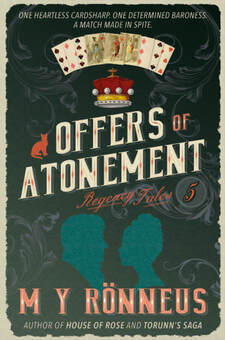 "We shall need a corpse." When Captain James Hartcourt’s best friends ask him for an unusual favour, he doesn’t hesitate. Losing fortunes at cards, London’s shady underworld, his mother’s schemes – few things faze him. Until he meets Lady May. Destitute but determined to retrieve the family estate, Lady May arrives alone in London with a proposition he cannot refuse. She discovers that Captain Hartcourt is a cardsharp with emerald eyes and dangerous kisses, but soon she must wonder whether he is a murderer too. Mixing the profound with the hilarious in a rare formula, Offers of Atonement, brings the early 19th century to life in vivid colours. This literary, romantic comedy comes with a gritty twist. Inspired by writers like Austen, Wilde, and Wodehouse, this is wholly original story by Maria Yrsa Rönneus. Offers of Atonement is the fifth stand-alone novel in the Regency Tales – a series of captivating and remarkable dramas of love and jealousy, friendship and deceit. TW: Contains profanity, mild sex, violence, attempted rape. Main Character of An Impossible Dream, from four different perspectives, from four different books6/29/2023 The main character in An Impossible Dream (11/20/23), Sare, is a reoccuring character in my Be Series. Here are some of the different perspectives of Sare from Madam Hayworth in Be (book 1), the Queen in Where the Heart Is (book 3), Ari from When Morning Comes (book 4), and Elsbie in the upcoming An Impossible Dream (book 2), which is Sare's story!
There was something about when Sare was anxious or excited or too tired to care, when the carefully-crafted façade began to crack. Elsbie could hear it in the less-than-perfect words, the accent and cadence of kitchens at night and laundries and alleys and brothels. The choppy sentences and incomplete, blended together words. Of dirt and dust and moonlight and never-enough-time and shadows. The impolite and improper and imperfect that naturally rolled off the tongue. It was a rough stone rubbed shiny. Interview with Abigail Silver, Author of Visions of Fire (book 2 in the Redeeming Grace Trilogy)4/15/2023 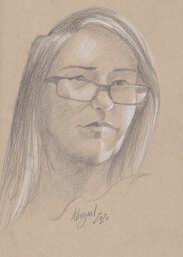 Abigail Silver grew up reading Anne McCaffrey's Pern books and her father's old comic book collection in the mountains of central Pennsylvania. She holds a BFA from Edinboro University of PA and currently resides near Charlotte, NC. She shares a humble one-story abode with her husband, son, and fur children. When she's not reading, writing, or drawing (which is rare), she enjoys blasting music with the windows down on long road trips. Hi, Abigail! I am very excited for this interview and I appreciate you taking the time to answer the questions. Absolutely a pleasure to talk with you, Ellie! Thank you for taking the time to read Visions of Fire and to ask such thoughtful and insightful questions! 1) Are you a pantser or a plotter? Can you share a little about your writing process? So, I’ve never been someone who can plan out all of my scenes and then write them down as if I were filling out a worksheet. That process takes out all of the mystery and discovery for me, which is what keeps me coming back to the page. That said, there’s no way to tell a story this complex without some kind of a road map. This was the first time I tried to write with a particular ending scene in mind rather than letting the characters and logic take me where they would. So, starting with that scene, I sort of fleshed the story out in a backwards way, asking myself what I needed in order for everything to make sense in the end. I did do a scene by scene timeline when I was about halfway through the book, just to keep track of all the moving pieces. I referred back to it a few times, but by the end it was completely ignored. I have looked at it since finishing the trilogy, and I'm pretty sure it’s a completely different book. 2) What inspired Gracie's story? Music is a huge inspiration for me. I have a long commute and I enjoy listening to the pop stations and streaming services, as well as news and talk radio. I get a lot of inspiration for my writing from all of those things - from song lyrics to current events, as well as situations going on in my own life. Of course other fiction, like books, TV shows, and movies can give me a creative nudge as well. For Gracie in particular, I was watching a lot of Dr. Who at the time and very interested in time travel. I had just finished working on a piece about the romance between my characters, Gabriel and Olivia, and was wondering what would happen to them in the future. Then I heard “A Team” by Ed Sheeran on the radio and this little scenario came into my head. Then a writing prompt popped up on one of the writing pages I was following at the time and I decided to jot down a short story that I called “Amaya Over the Rainbow.” Gracie has her first mention at the end of that short. After that, I had to know how it all worked out! So I started writing Gracie’s story, and the original short story ended up being rewritten and incorporated into the end of Book 3. 3) Books in the Redeeming Grace series are very well balanced, whether it is the various aspects- world building, action, romance, family drama, the different fantasy and scifi elements- or the reminders of book 1 in Vision's of Fire. How do you achieve such balance? Thank you so much! This is a balance I think about constantly, especially after reading so much sci-fi and fantasy as a young person. When this mix is off, it makes a work incredibly difficult to read! When I approach a scene or a line, I always ask myself what it is contributing to the narrative. If a scene isn’t doing at least two or three important things, I usually try to cut it and incorporate the information in it somewhere else. For example, let’s take the scene from Visions of Fire where James, Liam, and Gracie are talking about Gabriel’s past while eating in the cafeteria. Obviously I needed to cover a lot of Gabriel’s backstory, but by having the banter between the three young characters occurring in the same conversation, we’re also building their relationships and characters at the same time. In fact, I tried to make a lot of the backstory and technology talk conversational, so that instead of being forced to read through blocks of text, the reader instead gets to enjoy a dialogue very much like gossiping with friends or reading a series of text messages. Not only do we learn a lot that way, but we then feel like the characters are our friends who have just shared fun information with us. 4) There are popular tropes in Visions of Fire, such as love triangles, but it's always a unique and refreshing take. Do you enjoy these tropes as a reader that you play on as a writer? And how does that affect your writing of them? As a reader, I’m very hard to please with tropes. When I was little, I’d read a story and think, “it would be so much better if they just did THIS instead!” So I’d grab a pencil and write my own stories. Thirty years later, I'm still doing it! My favorite thing to do as a writer is to turn gender roles and tropes on their head. That said, I won’t break something unless lived experience says it can be broken in a realistic way. Some tropes are that way because life is that way - like characters who aren’t always trustworthy, or who turn out to have ulterior motives. That’s just how life is, and I don’t mind including characters or tropes that bring the reader valuable insight into human nature. But let’s face it, a lot of tropes, especially romantic ones, often paint women as helpless and men as stupid or emotionally stunted. I don’t think that’s accurate or fair to anyone. My goal with breaking tropes is to make my characters as human and relatable as possible. They may be vulnerable or uninformed, but they’re not helpless or stupid, and they’ve usually got their heart in the right place. 5) "I'm not chasing after anyone, except maybe me" is just one of the lines that stuck out to me. Gracie's, the main character, exploration of identity and trying to figure out her place in the world comes across as very feminist. "Thought-provoking" is another adjective that comes to mind with the tough topics you don't shy away from, like Gabriel's addiction. You always write with such respect. How mindful are you of that while writing? How do you maintain such respect for both characters, as well as readers who might be living similar experiences? The way I view character development is empathy. I try to imagine the world through that character’s eyes. What are their hopes, dreams, and most importantly, fears? I find, more than anything, people are driven by fear. Whether it’s Gracie’s fear of being trapped in Angelus Quietum, which is just another way of saying nowhere, with her dad forever, or Gabriel’s fear that Gracie will learn about his past and no longer find him worthy of love or admiration, those kinds of deep fears are what drive their actions. When we understand a character’s motivations, when they show us that their fears are so much like our fears, suddenly we can’t help but identify with them. And that’s where I try to write from as much as possible. When you’re talking about the addiction issue and all the painful things that come with that, I wouldn’t say it’s any different. I think of these characters as real people, almost as friends, and I write them as I would want to be written - with respect and compassion for their humanity, while also being honest about the consequences of their choices. 6) Your settings are always so rich and fleshed out, almost as if it is a character itself. From history to religion to politics. Can you share a little about your process for world-building? Any tips or tricks? How do you keep it at that sweet spot of just enough in your stories? My world building is a little unfair, because I have been writing in this multiverse for at least two decades now. All of that planning and history allows me to write as if I live there, because mentally, I suppose I do. One tip I can give, is one of the first things I always do when starting a new novel. And that is to create a planning document that is separate from the manuscript. It’s there that I keep any important definitions, scene ideas, and cut scenes that didn’t work out. When planning out Cybele, the planet Gracie’s story takes place on, I had the advantage of writing Gabriel and Olivia’s story first. So I knew all about the history of the Inspiration and had whole genealogy charts and charts of who was in what job on the generation ship, before I even started. Then, when I began brainstorming for Gracie, I drew out a large map of Cybele and assigned place names that tied back to individuals on the Inspiration. That way, their history would be seamless and I knew what kinds of last names and features people from various areas would have. I also kind of let my mind wander about the world at that point, thinking about what kinds of religion and societies might have sprung up from the characters and families in the earlier novel. 7) Visions of Fire deals with a bit of science. How much research went into writing your books? Was it something you have always been interested in? How do you make real-life facts compliment the fantasy elements and the flow of the narrative? My father is a retired chemist who loves science fiction. To him, I am sure my work is much more fantasy than sci-fi. He's the type to research every tiny detail. For me, as long as I can explain it in a way that makes logical sense to me, I am happy. I don't have to know the exact equations behind it. I'm more of a big picture, application sort of person. What would this concept look like in real life? That said, I have done a lot of reading on the science of aging, addiction, and the psychology of trauma. I love reading psychology text books more than is probably wise for someone without a degree in it! 8) Your illustrations are such a cool addition to the reading experience. What inspired you to include them? Can you share a little about your process for illustrating? Is this something you're planning on doing with more of your books going forward? My day job is in visual arts and drawing is intimately tied to my characters and world building. As I am thinking about these characters, drawing them is part of that empathy building process. That said, I have created well over 100 drawings for this trilogy and it has been an exhausting process! The illustrations also make publishing and downloading the books more difficult. I think they work in a unique way for Gracie's story, because I wanted to tell her story almost as if she were speaking or journaling. Since she is an artist, I feel that the sketchbook style makes sense and gives an intimate feel to her story. All this to say, I'm not sure if I will continue illustrations if or when I ever publish again after Book 3. 9) Can you share a little about book 3 in the Redeeming Grace trilogy and what else you are working on? Sure! Book 3, The Fear of Time, pulls together all of the threads I've been weaving in Child of Awareness and Visions of Fire and reveals the shape of the pattern. I will warn you, it is not for the faint of heart! As Gracie's asides have hinted since the beginning, there are so many roads that could have led away from disaster, but she isn't on one of them. For those brave enough to see how the story ends, I am hoping to have her ready for publication this summer. As for new projects, I actually have a vision of Cybele's future that I would like to write, but it has so many moving pieces that it makes Gracie's story look quite simple. As a result, I have been working on a lot of writing that I would consider "pre-work" or back story. Stuff that takes place off stage that I need to know, but that doesn't necessarily show up in the published cannon. One of those pieces is my current drafting project, a rewrite of the love story between Gracie's grandparents, Gloria and D'nay. Follow Abigail Silver on Social Media! Check out Abigail Silver's website and TikTok, as well. Follow Abigail Silver on Amazon and Goodreads!  My name is Gracie Usuriel and fire is in my blood. According to my dead sister Ariel, it’s in my very DNA. She thinks I’m the strongest pyrokinetic ever born on Cybele—so strong my flames actually burn holes in the fabric of reality that allow me to peer into other times and places. Hence why my best friend happens to be the ghost of my (much) older sister. So what exactly am I supposed to do with all this firepower? At eighteen, I had no idea. I just knew I didn’t want to spend the rest of my life twiddling my thumbs on my father’s farm. Dad might choose to spend his whole life hiding out in Angelus Quietum, but I was ready to go have some adventures! Not to mention a whole bunch of long-overdue research into a particularly mysterious immortal parent. And if I happened to be taking off to the same university as a pretty, blond diplomat-in-training, well, that was just a bonus, right? Dad, on the other hand, didn’t see it my way. He pulled every guilt protocol in his coding. Once he saw I’d made up my mind, though, he relented with a stern warning about the Overwatch. “They’re our police,” he said, “the ones who make sure individuals of Awareness stay in line. With your head blindness, the telepaths will be very nervous around you and I won’t be there to make sure everyone remains… civilized.” “I’ll be fine, Dad,” I reassured him. “After all, how much trouble can I get into at school?” Are you a pantser or a plotter? Can you share a little about your writing process? I, honestly, did not even know of those terms till this past year, so I'll do my best to answer. I think I fall somewhere in the middle. When I set out to write the book, I know how it will begin and usually know how I want it to end. It's the middle that I improvise along the way. I often write scenes as they come to me, as though I am watching them on a movie screen. I write them and then I figure out where they go in sequence and polish them up in editing later. Some things do get scrapped, but not a lot, and those are saved, because you never know if that scene could work in another book. I really enjoyed the different pop culture references in Squeak. Did you grow up in the 80’s and was it a blast from the past to write in this decade or did it take some research? Yes, I was an '80's kid! I like to say I had the best of three worlds as in my childhood. I was born right in the mid 1970's-1974--so a small part of my childhood was the '70's, the majority of it being the '80's, and the last three years(16-19)was early '90's. The only thing I DID have to research was the actual release dates of the movies and songs I cited because I wanted to be sure those things were already in existence at the time this story was set. I knew they were, but couldn't remember specific dates. Also, little things like whether or not the boys would still be drinking Coke out of glass bottles, in that slingshot demo chapter. You mention other books about talking mice in Squeak. Were some of those titles your favorites and, if so, why? Did you draw any inspiration from them? Oh yeah! I loved Beverly Cleary's Mouse and the Motorcycle series! I think that was way ahead of its time in a lot of ways. I also loved The Chronicles of Narnia. Oddly, I hadn't read Miss Bianca, but saw the movie on which it was based, The Rescuers, but I knew it was about a mouse who rescued a little girl. So I got this idea that Celeste was now a member of this strange, secret society of people like these authors who, for whatever reason, can speak to animals, particularly mice. So I thought "What a fun idea. Why not? If a sci-fi author can claim Michael Phelps is half- merman, then I can surely write that thing with Celeste is real." What inspired you to include illustrations? For other authors who are thinking of working with an illustrator, can you discuss that process a bit and any advice? Growing up reading books, I always loved the ones that had illustrations. My Wizard of Oz books that were lent to me by my mother, had gorgeous illustrations, and I always loved the ones in Alice in Wonderland. As for my illustrator, I found her purely because of association. Sydni Levi-Nasada was a student of my husband, who taught middle school and high school band many years ago. We've known her since she was in sixth-grade, but even then she was always drawing and painting, and we knew she was going places with her art. Though young, she was very ambitious and focused on what she wanted to do. Which at the time, I didn't know she wanted to illustrate children's books. So flash forward many years later, I mused to my husband that I needed to find an illustrator, and he gave me this "Duh" look and reminded me of her. I must admit, I didn't think she'd accept, but she surprised me. She even read the book front to back and loved it, which I think it's important. Just my opinion, but I'd advise when looking for an illustrator: Find one who also likes to read and will read your book. Believe me, it helps, and I think this is one of the things that helped her in her interpretations of my characters. Another thing I did: Even though she had read the book, she asked me for a detailed description of each character, physical as well as any personality traits, to capture. So, I did that. I, also, knew that I wanted the cover to be eye-catching and beautiful, but entice the reader and draw the eyes, making them ask questions, which I think we succeeded. The cover art you see was my conception, but she literally gave life to it. Celeste, the main character, lives with a medical condition that sometimes makes playing with her peers difficult. Why is representation like this, as well as other representation you have, important? To a child, especially, it's anything that makes you different from your peers. In Celeste's case, it's that she can't play normally like her peers. I have that same problem and it still can be a pain in the behind. And I know that there are probably others with that, but it's never talked about. So, I hope the things I describe that she goes through, someone-- young or old-- that has this also, will point at the book and say "Oh my god! This is me! She gets it" I think it would have been odd and unrealistic if there were only white kids in the whole class. A lot of the characters, you may be interested to know, are loosely based on real kids I knew. I changed last names and made them more fictional than not. Can you share a little about what you’re currently working on? What’s next for you? I am currently working on book 2 of this series. The title is "Cowboys & Queens." I have finished the first draft and am currently editing and revising. My illustrator is set to read it as soon as I am done with the final draft and then we will begin the collaboration for that. I will be releasing the synopsis for it on March 17th this year! Follow D.A. Power of social media! 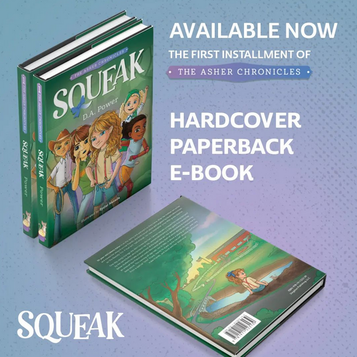 10 year-old Celeste is as shy, quirky, and awkward as they come. After her mother remarries and moves her away from her few friends, she finds herself alone, and targeted by the local bullies. If that wasn't bad enough, her new stepfather happens to be her 5th grade teacher! One day, at the Lincoln Elementary School playground, using courage she didn't know she had, Celeste saves a mouse from the same bullies that torment her. Her bravery is the spark that shows her fellow 5th graders that she deserves a second look. Her weirdness is multiplied by an unusual new friend she has no choice but to keep to herself. The story takes place in Baxter Springs, a small Southeast Kansas town. It's a place where events become increasingly odd and bizarre in this first installment of D.A. Power's The Asher Chronicles. 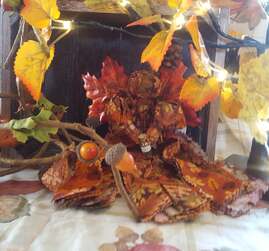 One of my Raggle Taggle Fairy Dolls from my handmade business, Acorn Tops! Click image to go to Etsy Shop! One of my Raggle Taggle Fairy Dolls from my handmade business, Acorn Tops! Click image to go to Etsy Shop! As I explore in my Acorn Tops Blog, The Universal Toy, dolls, within a historical context, were a source of companionship. They were discovered in graves across countries, a sign that they were thought of as precious. They can be seen as an aspect of innocence and childhood, as they were dedicated to goddesses when outgrown. Dolls were used to display clothes, such as the Bartholomew Babies in England. They were used to promote and prepare for socially acceptable roles and expectations. There’s a lot of meaning one could derive from just the historical context of this toy. What I find in writing, though, is it is not just the research of the outside world that contributes to play of symbols in stories. It is our personal connection and experience. Dolls remain an ever-popular toy of choice today. Plenty of children have had or played with dolls growing up, from brands such as Barbie to American Girl to Cabbage Patch. My favorite doll growing up was a hard plastic Molly doll from the children’s show, The Comfy Couch, and she’s been so well loved that my mother had to use nail polish to fix the red of her nose and sharpie to fix the black of her shoes. Another hugely influential doll in my own life is named Edna. She is one of the few possessions my great grandfather was allowed to keep of his mother, for who I am named, after she passed away. She’s been this incredible touch stone of connection and family history that has survived house fires and multiple moves, including one across the country. Perhaps then, given these personal ties, it is no surprise that dolls and character’s relationships to the toy become an ongoing symbol throughout my Be book series. This was something, I, as the author, did not fully realize until @DailywriterQ on twitter asked about symbolism in author’s stories. It starts in Be with Ari and Peter’s niece, Rosy, and a cloth doll with yarn hair named Emily… He forced himself to smile, fist curling tight. “I still believe in fairy tales, even after everything.” He hesitantly whispered, but a breath of hope left within him. “I know you don’t. I know you think it’s foolish.” Childhood is often denied to children where Ari, Peter, and Rosy are from. It was something denied to Ari, who makes it a point to ensure others receive what she never had. For Rosy when she receives Emily, it is hope and wishes coming true. It would be her equivalent of Santa Claus. As my mother always said, it was something to believe in that was bigger than ourselves. It is something magical in a world that does not offer children like Rosy much magic. For Peter, who was doing everything he could to try to get Rosy a doll, it is connection and community. Which carries over to when Rosy lends Emily back to Ari in a moment where Ari is feeling very isolated and alone. It then transforms for Ari into a type of companionship, comfort, and touch stone of that same hope she gave to Rosy. I would not say there is a larger cast of characters in An Impossible Dream than in Be, but where Ari feels very isolated as a young woman surrounded by men, as I explore in my interview with Jenn Romano in The AjennDa Blog, Sare in An Impossible Dream is surrounded by other young women, allowing for more of a comparing and contrasting of circumstance and symbolic meaning. “Every lil’ girl needs a dolly.” Gilly said like it was a simple matter of fact. For Sare, who has been a servant her whole life, the very notion of a doll confounds her. She associates it with pretend work, rather than play. As her conversation with, one of “the ladies,” Gilly progresses and she tries to riddle out this popular toy, dolls become a look into the divide of haves vs. have-nots, as she “would argue only certain little girls ever had a doll,” and even then, what those dolls come to mean within those varied circumstance.
Sare does not know if her friend, Gracelynn, had a doll growing up, but imagines, knowing what she knows of her home life, that it would have been treated the way Gracelynn was treated: “to sit on a shelf out of… reach, as a means to have something else to brag about.” In that same vein, both Be and An Impossible Dream, discuss the row of unblemished porcelain perfection sitting in the princess, Rochelle’s, windowsill. In Be, Henry compares it to his mother’s books which he calls “well loved” and looked it. In comparison to the cloth doll like Emily or Elsbie’s unnamed rag doll, Rochelle’s dolls, too would have been expensive and rarely played with. She is another girl who is seen as little more than an object by those in her life, a comparison Sally, another of “the ladies,” later makes about how Elsbie was treated by one who should have loved her most. Even as Sare comes to recognize a more positive benefit of the doll, beginning to see what her friend, Elsbie, saw in her doll specifically, companionship, it acts as another layer of a metaphor for Elsbie and a bit of foreshadowing when thinking about why Elsbie never took such a precious thing back with her when given the chance: “It was safer where it was.” Ultimately, for Sare, the doll comes to represent the ever foreign and elusive “before” she alone among her peers does not have, the love, family, and memories of a time before she donned an apron and scrubbed chamber pots, as this unnamed rag doll was made specifically for Elsbie by Sally and Gilly keeps it and the rest of Elsbie’s childhood treasure safe. What do dolls symbolize for you? Did you have a favorite doll growing up? If you are a storyteller, do dolls make an appearance in your story? rIn my Be Series, there's some overlap when and where the books take place, due to the shape of the series versus the timeline. The second book, An Impossible Dream, is a prequel and takes place over the course of six years, overlapping in terms of the timeline for the very last year with the first book, Be. The places the characters visit, also have some overlap, such as with the town surrounding the castle. Here are two excerpts side by side, to compare, of the town surrounding the castle from seventeen-year-old Ari's perspective in Be and sixteen-year- old Sare's perspective five years earlier in An Impossible Dream.
Meet the characters from my novel, Be! Alongside my digital art character sketches are quotes directly from the book about each of them! My novel is available on Amazon, signed copies are available in my Etsy Shop and my upcoming events, and can also be ordered through your favorite indie bookstore or your local library! 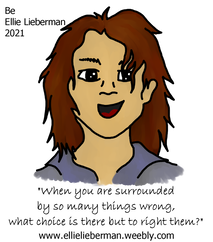 Henry: Henry forged together remnants of himself, small glimpses that were allowed or stolen, and despite never seeing his own reflection, there were still mosaic glasses he wore when he looked upon anything but himself. 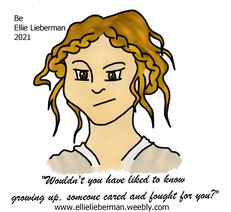 Ari: “There’s a price to pay for freedom. It’s not like in all the books and fairy tales.” It wasn’t always loud and glorious. And, even then, the story was so often reframed, never mind being hers. “There’s a price to pay, and I’ve paid it. I’m willing to pay it now, so someone else might not have to.” 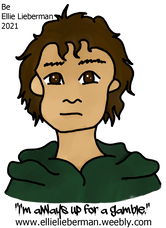 Eacann: He wore the story of his life in his eyes. The rags of clothes and calloused hands. The way he held himself. One arm extended in greeting, while the other held tight to the knife behind his back. 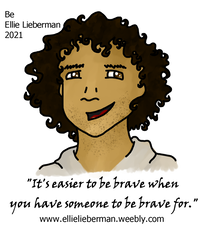 Fra: But, even then, he’d grown accustomed to Fra calling his name, rushing in. There wasn’t always a grand rescue, and it was a rarity either would escape the King’s clutches unscathed, but he was there. A year without him had yet to break the habit. 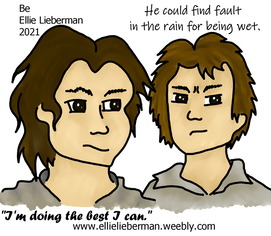 Nick: Though, she supposed that was more Nick’s doing. That was one thing in her oldest brother’s favor, she supposed. There wasn’t much on that list and each time she saw him it only seemed to shrink more. Wells: He was angry because he wasn’t capable of feeling much else. He was scared and worried about Pine, which meant he was going to be angry and all of that would be directed at her. Because he was already angry at her… Because she was always the easiest target for him.  The twins, Pine and Rowan: Where Pine was vivacious, Rowan was quiet. Where Pine rushed to never miss a thing, Rowan took his time to take everything in. They were an odd pair for as much as they shared the same features. 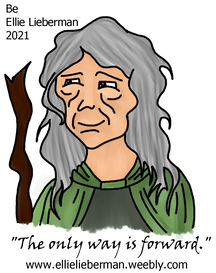 Auntie Patchet: The old woman sat on a stump with a tattered shawl wrapped tight around her hunched shoulders. Her hands on the walking stick were as knotted and twisted as the wood itself. 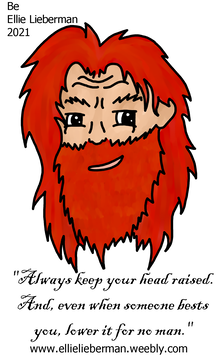 Leon: A man, as big as he was loud, snatched Henry up, engulfing him in a sea of red beard. 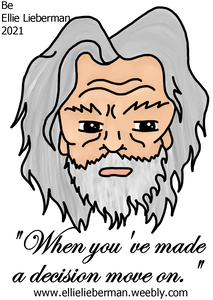 Henry's Grandfather/ The old man: Despite the way age bowed his limbs, his very presence was daunting. 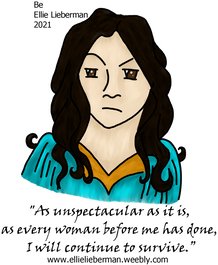 Rochelle: “And, even then, try being a girl in the castle.” Her voice was cold and hard. “I have survived. I get no applause. No declarations of bravery. No mention in history. I will be vilified and demeaned and threatened. And, as unspectacular as it is, as every woman before me has done, I will continue to survive.” Henry wondered if he might. 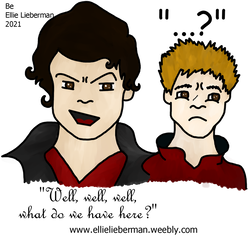 Briggs: As far as princes went, Briggs was exactly what she expected. Just having been in his presence once was enough to make her shudder at the mere mention of his name. Henry and Fra’s stories were bad enough, but the rumors Auntie Patchet dug up made her blood run cold. Six feet under the ground was too good for him. Zane: “And here I thought Zane was the brainless one.” She rolled her eyes.  Peter: His whole world was that little girl. But, his life was that tavern he built from the ground up with nothing but dust and sheer determination.  Interview with John St. Clair about his debut novel, Stalin's Door! John St. Clair started his career as a novelist after spending 25 years battling fraud and abuse in the cyber realm. John St. Clair lives with his wife in the northern Virginia suburbs. Stalin's Door is his debut novel. Tea enthusiast. | Cautiously pessimistic. | He/Him. | Pro em dash and pro Oxford comma! ***Spoilers will be marked in red with a clear warning!*** You mentioned in previous interviews that you consider yourself both a pantser and plotter. How much of genre do you feel affects that? JS: Just to level set for the readers of this interview: a “pantser” will typically not know in advance how a story is going to play out—they will just write and see where it leads them. A “plotter” on the other hand likes to have all the details in their story worked out before putting pen on paper. To be honest, I don't assess the genre I'm writing in before making the decision on how to go about writing it. I find that my approach of thinking of the overall story arcs first, often for an extended period of time, will give me the greatest chance at nailing down what I like to call “the 50,000 foot view” of the story. From there, it's just fun to fill in the gaps with a little pantsing. I will admit that in the moment of writing, I am often surprised at where I end up! Was the construction of the novel, the organization of the different sections and corresponding perspectives, planned? What was your process? ***SPOILERS*** JS: For the technical construction of Stalin's Door, and considering its complexity, I did absolutely plan out the sections beforehand. Eagle eyed readers will have no doubt picked up on a few things. In the first section, “Zhenya's Tale,” there's a progression from Spring to Summer to Fall to Winter, over consecutive years, with each season becoming progressively darker in tone. Also, you'll notice that the ages of the protagonists increase with each section; Zhenya as young girl, then Sava as an early middle-aged man, then Lera as an older middle- aged woman, and finally Zhenya as an old woman. I wanted to show the passage of time and in the same way offer different perspectives from each of the main characters' points of view. Were your characters “walk-ons,” just coming to you, or were they carefully constructed? JS: The three main characters in Stalin's Door; Zhenya, Sava, and Lera were all absolutely carefully constructed, and fleshed out before I started writing. Each of the minor charactersless so. You write three different perspectives that include age and socioeconomic backgrounds. You mentioned in a previous interview that Lera was a favorite between the three. Was there a character and perspective that you found most difficult to write? ***SPOILERS*** JS: An excellent question! While every author certainly “loves” all of his or her characters, I do admit a certain first amongst equals when it comes to Lera. That said, I did find that the writing of the character of Admiral Krayevsky to be, shall I say, challenging. You'll recall that the age of the admiral and that of Sava, are equal, with their birthdays only 2 days apart. And their careers within the Soviet Navy were wildly divergent. I wanted the admiral to be like a foil to the character of Sava, so I took great care in writing his story too. Was there a part of your own writing that surprised you or did you know everything that was going to happen? JS: Stalin's Door, the novel, had an interesting birth, so to speak. The first part, “Zhenya's Tale” was written as a short story first, and was known simply as Stalin's Door. I sent it out to some beta readers and received some excellent feedback. Later, I added what would become “Sava's Tragedy” and entitled it Behind Stalin's Door. Both the first and second parts were now the size of a novella and I again sought out feedback from my beta readers. Once I finished the novella, I knew I had a great shot of turning it into a full fledged novel with the additions of “Lera's Yarn” (Beyond Stalin's Door) and “Zhenya's Allegory” (Return to Stalin's Door) the third and fourth parts to the story. All along the way I was still doing all that arduous historical research to ensure my story was as authentic as possible. ***SPOILERS*** Getting into the nitty-gritty details definitely surprised me. Some scenes that turned out even better than I could have hoped for were: the reception-party where Stalin makes an appearance, the scene with Zhenya, Lera, and the hooligan guards at the train depot on the way to the Gulag, and scene with Zhenya and Lera in the cemetery at the end of the novel. How much of your story is “research-based” versus character driven? JS: In any historical fiction piece, unless it's outright historical fantasy, I feel that the author should strive to make it as genuine as they can. This is the reason it took me 5 years of research to try and make Stalin's Door as authentic as I could. Details—even down to the most minute ones—matter. Now that said, my characters have to live within that world that is well documented. I'm trying to tell a story within a framework: a world and a time that my readers haven't been to or lived in. My characters faced challenges and ordeals that fit within the known facts of where and when I placed them into. My job as a writer was to make that as interesting and compelling to read as I possibly could! I’ve heard historical fiction authors discuss that sometimes history or the story itself is sacrificed for the other. Did you find this to be the case in writing Stalin’s Door? Do you agree with this belief? JS: I think it's perfectly fine to tell whatever kind of story you want to—and make whichever sacrifices you need to. However, to be clear, if the author deviates a great deal from the established facts of history, then the work should be either labeled fiction, or historical fantasy. My goal was always to write my story within the genre definition of Russian historical fiction, so my “goalposts,” so to speak, are very well defined and known. I tried extremely hard to stay within these goalposts, for the sake of accuracy and authenticity. Through Lera and Sava’s sections, you explore events before, and that led to, Stalin. With so many individual events occurring within a single period of time, how do you decide what to include? JS: This is a terrific question! The period of time that's central to my novel, known as the “Great Terror” may only be a couple of years, however there was so much to tell! I really had a tough time deciding. That said, when writing from the first person, past tense point-of-view, my decision on what to include event-wise became a lot more clear. Only knowledge known to the narrator, or events experienced by the narrator are going to be passed on to the reader. If I as the author wanted to “pass on” something important history-wise to the reader, then I had to make sure the characters in my novel actually experienced them. This is exactly why Sava goes to work for the NKVD, and why Lera is exiled to the Gulags. They experienced these things, and could tell their stories first hand. I felt this was a stronger and more genuine way to tell my story! What didn’t make it into the finished book, research-wise and otherwise? What was cut in the editing process and how did you decide what to cut? JS: Believe it or not, I don't have a lot of “bonus scenes” that got left on the cutting room floor. For the most part, what is in the book is exactly what needed to be in there. Of course the time periods I explored in my story could have been even bigger if I wanted, however I felt that the way I structured it, with three very different characters, in three distinct points of time in their lives, and three distinct locations—made my story riveting. When reading Stalin’s Door, I couldn’t help but draw connections to other events in history that shared similarities. How conscious are you of the similarities between other events of different times and places to the ones you wrote about? JS: To be honest, when writing historical fiction, I always want to ensure I'm as accurate as possible for the time period I'm writing about. So, to answer this question, if there are similarities between what is happening in Stalin's Door, and what is happening elsewhere in history, it's likely because history tends to repeat itself. George Santayma had said, “Those who cannot remember the past are condemned to repeat it.” Do you agree? Do you hope Stalin’s Door can help us remember? JS: I absolutely agree with this terrific quote, and am distraught to say that autocratic and dictatorial rule are still very much rampant in today's world. My novel, I hope, can paint a dire picture of what can happen when that autocratic and dictatorial rule are left unchecked. So in a way, I do hope it can serve as a warning and a deterrent. Have you ever visited Russia or the museum at The House on the Embankment? If not, do you ever wish to visit? JS: I have not yet visited Russia. I definitely would like to, one day. Certainly the trip would include going to the wonderful House on the Embankment, in the heart of Moscow, and its on-site museum. I fear that the current geopolitical situation and world events will prevent this trip for many years to come, unfortunately. Another author had described your writing style in Stalin’s Door as “memoir.” After reading the book, it feels like the perfect description. Was this intentional? Do you feel this is reflective of your style in general, or was it unique to Stalin’s Door? JS: Writing Stalin's Door and giving it that memoir “look and feel” was definitely intentional, as I have an affinity for the first person, past tense perspective. I don't know if it's reflective of my style, however it was the very best choice I could make for telling this story. All the events are witnessed, or recounted, by the narrators. If something isn't known to the narrator, it won't be known to the reader. In this way, more than any other I can think of, one truly is living inside the head of the protagonist. This is more intimate, and much more rewarding, I feel. You have a bit of a fantastical element to your story. As a writer, did you always intend to mix genres? What inspired this aspect of your story? ***SPOILERS*** JS: I do admit I felt it was taking a bit of a risk when I added in these fantastical elements. Thankfully they are tiny, in my opinion, and don't distract from the more pure historical fiction elements. That said, in one very obvious case, when Zhenya is reunited with Lera, it was necessary to bring in a little fantasy. I always knew they would meet each other at the end of the novel, and quite frankly, I'm not sure there was any other way to go about it! In my opinion, a good historical fiction entices the reader to want to learn more and there is always more to learn. What questions do you hope the readers walk away with? Where are you hoping they go next? What are you hoping to spark in them? JS: A fabulous question! In so much of my feedback, I've been told that I've inspired my readers to go and investigate the time period I refer to a lot, that of the “Great Terror” that overwhelmed Moscow, and all of Russia, in the mid to late 1930s. Readers have also looked up and researched the Gulags, the specific Russian naval ships I mentioned, and even the House on the Embankment, not to mention the 800-pound gorilla in the room: Joseph Stalin himself! I hope they can come away with a greater understanding of this specific time period, that echos even today within Russia itself. Is there anything else you'd like to share with current or future readers? JS: I consider myself extremely fortunate to be able to write and I am truly thankful for all the readers my book has found—and will find! I am always working on something new; micro- fiction and short story contests, anthology submissions, and my second novel which I hope to have out soon: Lucky Dainéil McElheney! I appreciate the time you took to interview me, Ellie! Read more about John St. Clair and Stalin's Door on The Red Head Notes blog, including a review, interview, and guest post! 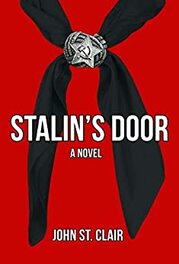 Stalin's Door In the dangerous time of Russia’s Great Terror, a knock on the door late at night could mean only one thing! Stalin’s Door is the unforgettable story of three extraordinary individuals who lived during the time of Russia’s Great Terror. They share a terrible fate which will forever intertwine their lives. Zhenya is the strong young daughter of an important government official, who is growing up fast in a privileged government enclave. Sava is a devoted husband, unceremoniously dismissed from the Soviet Navy, who considers a new opportunity. Lera is a wise grandmother who bears a crucial responsibility, while forced into exile in the outland of Siberia. |
AuthorGathering dust in the depths of my mind, random thoughts dusted off and put out there for the world to see... Archives
November 2023
Categories
All
|
Ellie Lieberman |
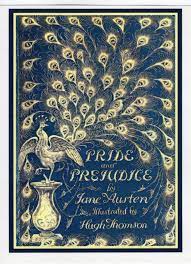
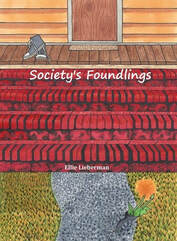
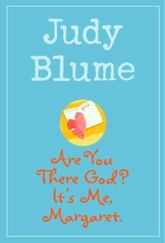
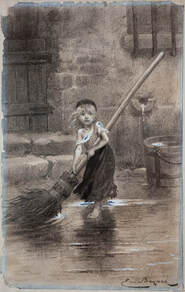
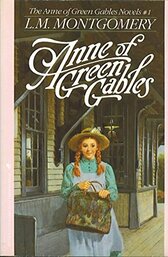
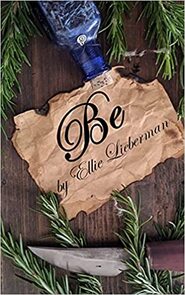
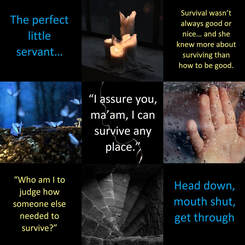
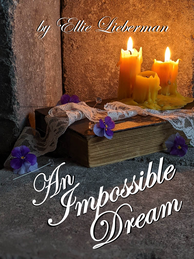
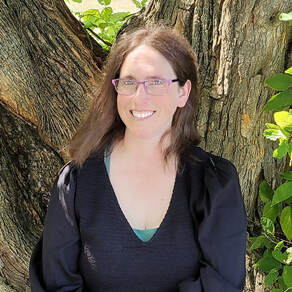
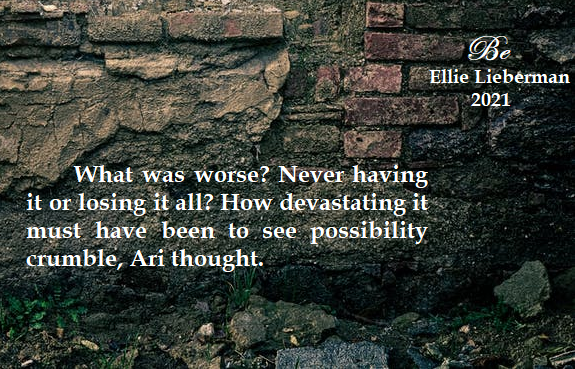
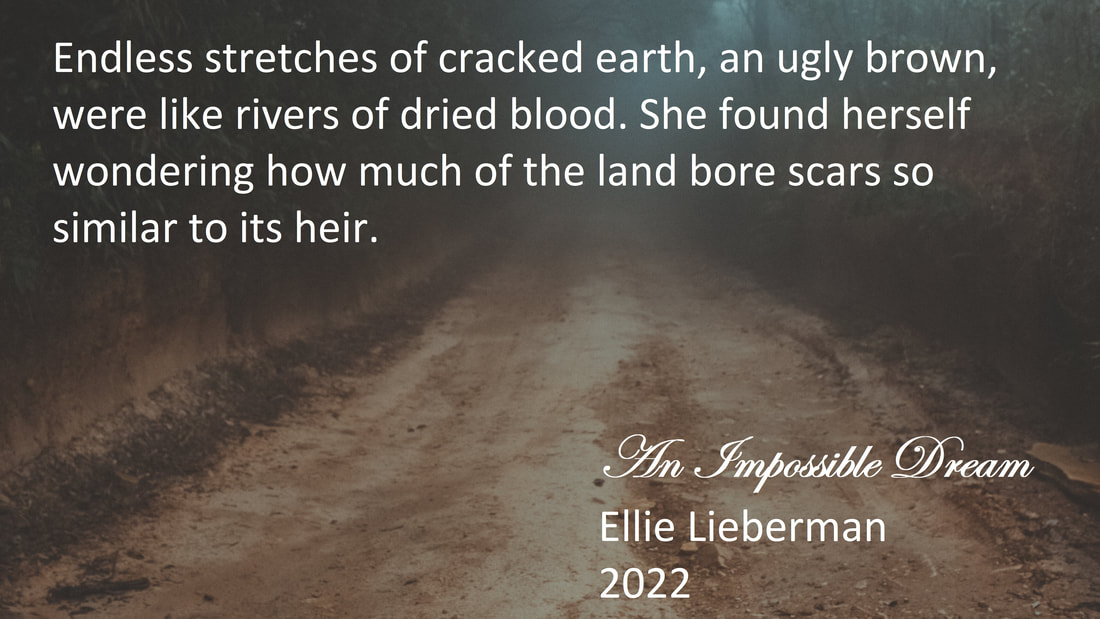
 RSS Feed
RSS Feed
